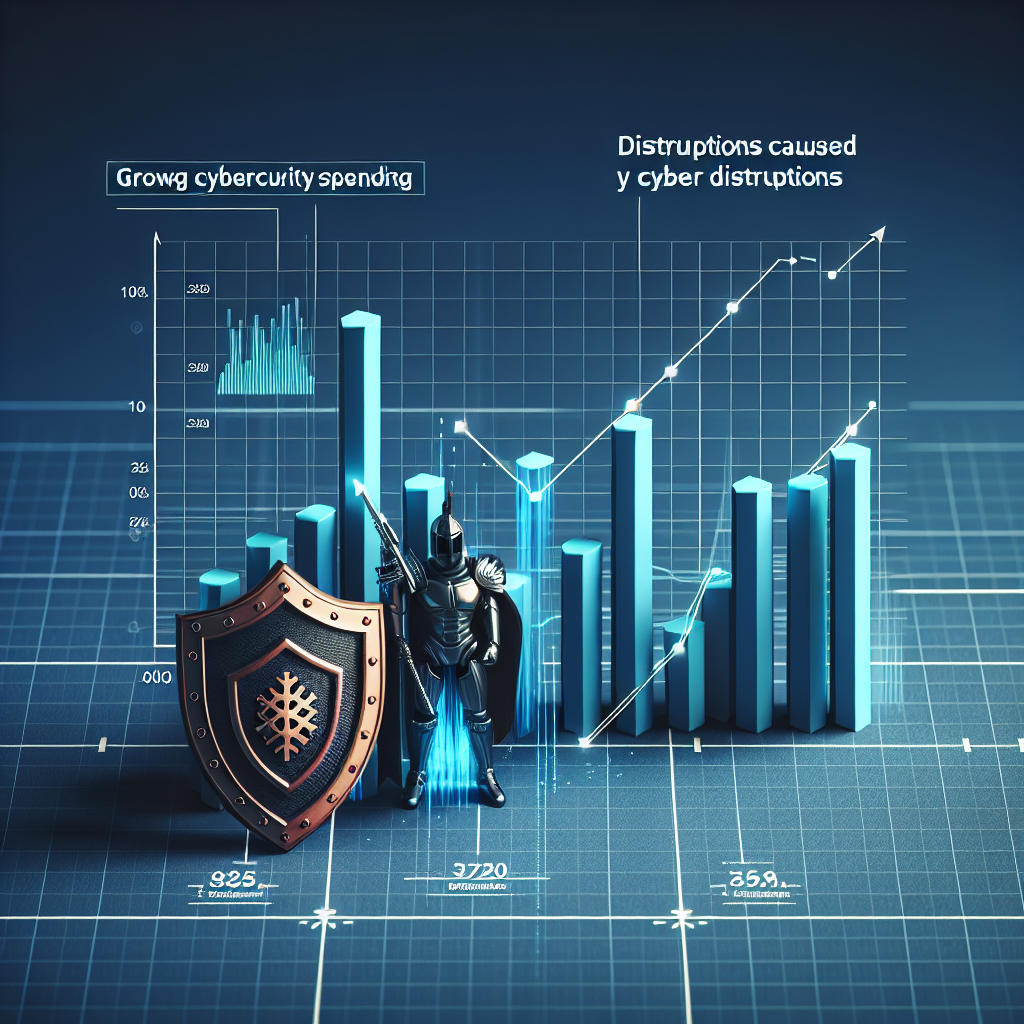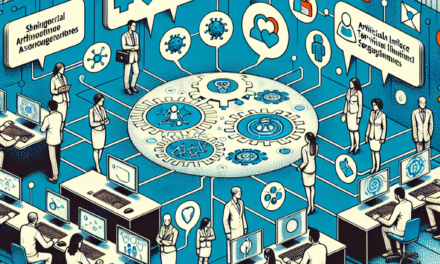Rising Cybersecurity Budgets Fail to Curb Attack Disruptions

In an era where digital transformation is at the forefront of business strategies, cybersecurity has become a critical concern for organizations worldwide. Despite the increasing allocation of resources towards cybersecurity, the frequency and impact of cyberattacks continue to rise. This article delves into the paradox of rising cybersecurity budgets failing to curb attack disruptions, exploring the underlying reasons and offering insights into potential solutions.
The Escalating Cybersecurity Budgets
Over the past decade, organizations have significantly increased their cybersecurity budgets in response to the growing threat landscape. According to a report by Gartner, global spending on cybersecurity is expected to reach $150 billion by 2023, reflecting a compound annual growth rate of 8.5% from 2018. This surge in spending is driven by the need to protect sensitive data, comply with regulatory requirements, and maintain customer trust.
Despite these investments, the return on investment (ROI) in terms of reduced cyber incidents remains questionable. A study by Accenture found that while 68% of organizations have increased their cybersecurity budgets, only 26% have seen a reduction in the number of successful attacks. This discrepancy raises questions about the effectiveness of current cybersecurity strategies and the allocation of resources.
Several factors contribute to the rising cybersecurity budgets, including:
- Increased regulatory requirements and compliance costs
- Growing complexity of IT environments
- Rising costs of cybersecurity tools and technologies
- Shortage of skilled cybersecurity professionals
While these factors justify the increased spending, they also highlight the challenges organizations face in effectively managing their cybersecurity investments.
The Evolving Threat Landscape
The cybersecurity landscape is constantly evolving, with cybercriminals employing increasingly sophisticated tactics to breach defenses. The rise of ransomware, phishing attacks, and advanced persistent threats (APTs) has made it difficult for organizations to keep pace with the threat actors.
Ransomware attacks, in particular, have become a significant concern for businesses. According to a report by Cybersecurity Ventures, ransomware damages are predicted to cost the world $20 billion in 2021, up from $325 million in 2015. These attacks not only result in financial losses but also disrupt business operations and damage reputations.
Phishing attacks continue to be a prevalent threat, with cybercriminals using social engineering techniques to trick employees into revealing sensitive information. The 2021 Verizon Data Breach Investigations Report found that phishing was involved in 36% of data breaches, highlighting the need for organizations to invest in employee training and awareness programs.
Advanced persistent threats (APTs) represent another significant challenge, as they involve highly skilled attackers who target specific organizations over extended periods. These attacks are often state-sponsored and aim to steal sensitive data or disrupt critical infrastructure.
The evolving threat landscape underscores the need for organizations to adopt a proactive and adaptive approach to cybersecurity, rather than relying solely on increased budgets.
Challenges in Cybersecurity Strategy Implementation
Despite the increased spending on cybersecurity, many organizations struggle to implement effective strategies that address the root causes of cyberattacks. Several challenges hinder the successful implementation of cybersecurity measures:
- Lack of Integration: Many organizations use a patchwork of security tools and technologies that do not integrate seamlessly, leading to gaps in coverage and increased complexity.
- Insufficient Skilled Workforce: The shortage of skilled cybersecurity professionals is a significant barrier to effective strategy implementation. According to a report by (ISC)², there is a global shortage of 3.12 million cybersecurity professionals.
- Inadequate Risk Assessment: Organizations often fail to conduct comprehensive risk assessments, leading to a misalignment between security investments and actual threats.
- Overreliance on Technology: While technology is a critical component of cybersecurity, organizations must also focus on people and processes to create a holistic security posture.
- Resistance to Change: Implementing new cybersecurity measures often requires changes in organizational culture and processes, which can be met with resistance from employees and management.
Addressing these challenges requires a strategic approach that aligns cybersecurity investments with organizational goals and risk profiles.
Case Studies: Lessons from High-Profile Cyberattacks
Examining high-profile cyberattacks provides valuable insights into the vulnerabilities that organizations face and the effectiveness of their cybersecurity measures. Two notable case studies illustrate the challenges and lessons learned:
Case Study 1: The SolarWinds Attack
The SolarWinds attack, discovered in December 2020, was one of the most significant cyber incidents in recent history. The attack involved the compromise of SolarWinds’ Orion software, which was used by thousands of organizations worldwide, including government agencies and Fortune 500 companies.
The attackers, believed to be state-sponsored, inserted a backdoor into the Orion software, allowing them to access sensitive data and systems. The attack went undetected for several months, highlighting the challenges of detecting sophisticated threats.
Key lessons from the SolarWinds attack include:
- The importance of supply chain security and the need to vet third-party vendors thoroughly.
- The necessity of implementing robust monitoring and detection capabilities to identify anomalies and potential threats.
- The value of collaboration and information sharing among organizations to enhance threat intelligence.
Case Study 2: The Colonial Pipeline Ransomware Attack
In May 2021, the Colonial Pipeline, a major fuel pipeline operator in the United States, fell victim to a ransomware attack that disrupted fuel supplies across the East Coast. The attack was attributed to the DarkSide ransomware group, which demanded a ransom payment in exchange for restoring access to the company’s systems.
The Colonial Pipeline attack underscored the vulnerabilities of critical infrastructure and the potential impact of cyberattacks on national security and the economy.
Key lessons from the Colonial Pipeline attack include:
- The need for organizations to have robust incident response plans in place to minimize the impact of cyberattacks.
- The importance of securing operational technology (OT) environments, which are often less protected than IT systems.
- The role of government and industry collaboration in addressing cybersecurity threats to critical infrastructure.
These case studies highlight the need for organizations to adopt a comprehensive approach to cybersecurity that addresses both IT and OT environments and emphasizes collaboration and information sharing.
Strategies for Enhancing Cybersecurity Effectiveness
To address the challenges and limitations of current cybersecurity strategies, organizations must adopt a more holistic and adaptive approach. The following strategies can enhance the effectiveness of cybersecurity measures:
- Adopt a Risk-Based Approach: Organizations should prioritize cybersecurity investments based on a comprehensive risk assessment that identifies the most critical threats and vulnerabilities.
- Enhance Threat Intelligence: Leveraging threat intelligence can help organizations stay ahead of emerging threats and tailor their defenses accordingly.
- Invest in Employee Training: Human error is a significant factor in many cyber incidents. Regular training and awareness programs can help employees recognize and respond to potential threats.
- Implement Zero Trust Architecture: A zero trust approach assumes that threats can come from both inside and outside the organization, requiring strict access controls and continuous monitoring.
- Foster Collaboration: Organizations should collaborate with industry peers, government agencies, and cybersecurity experts to share information and best practices.
By adopting these strategies, organizations can enhance their cybersecurity posture and better protect themselves against the evolving threat landscape.
Conclusion
The paradox of rising cybersecurity budgets failing to curb attack disruptions highlights the need for a strategic shift in how organizations approach cybersecurity. While increased spending is necessary, it must be accompanied by a comprehensive and adaptive strategy that addresses the root causes of cyber threats.
Organizations must prioritize risk-based investments, enhance threat intelligence, invest in employee training, and adopt a zero trust architecture to effectively combat cyber threats. Additionally, fostering collaboration and information sharing among industry peers and government agencies is crucial to staying ahead of emerging threats.
By embracing these strategies, organizations can maximize the return on their cybersecurity investments and better protect themselves against the ever-evolving threat landscape.





